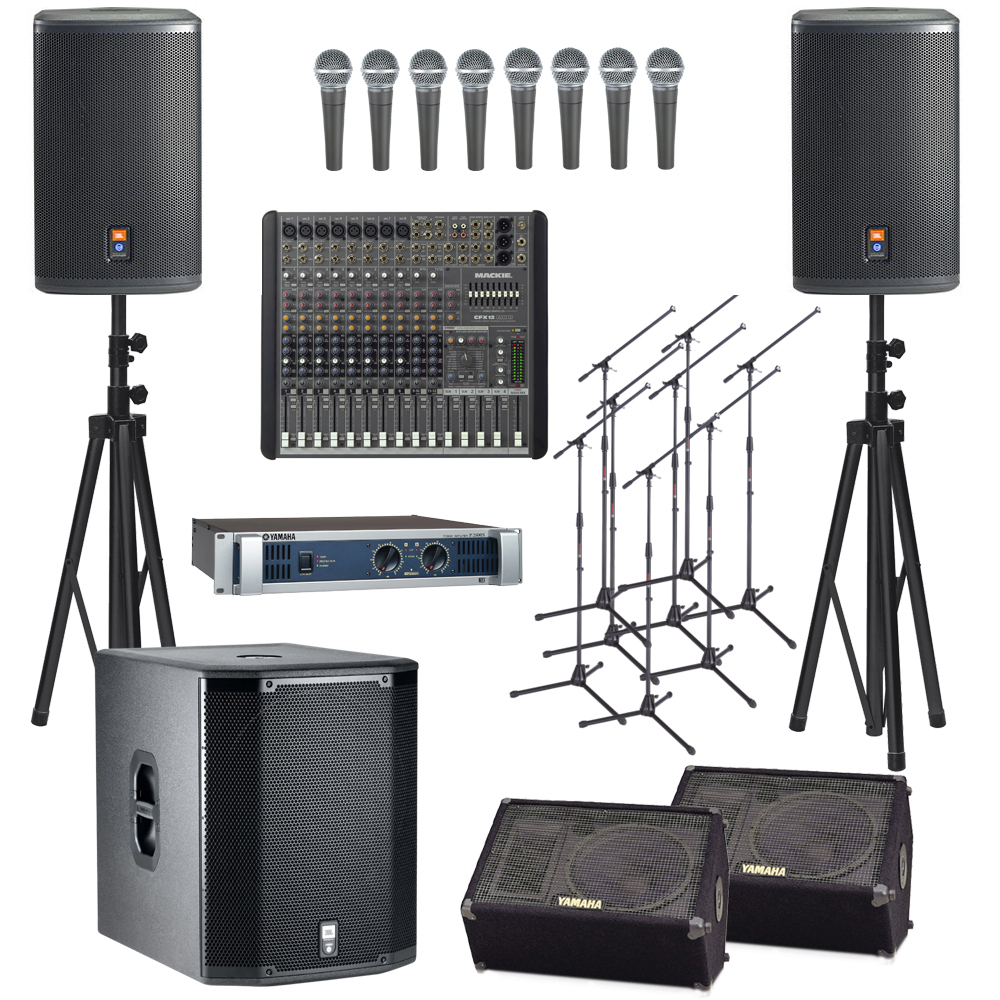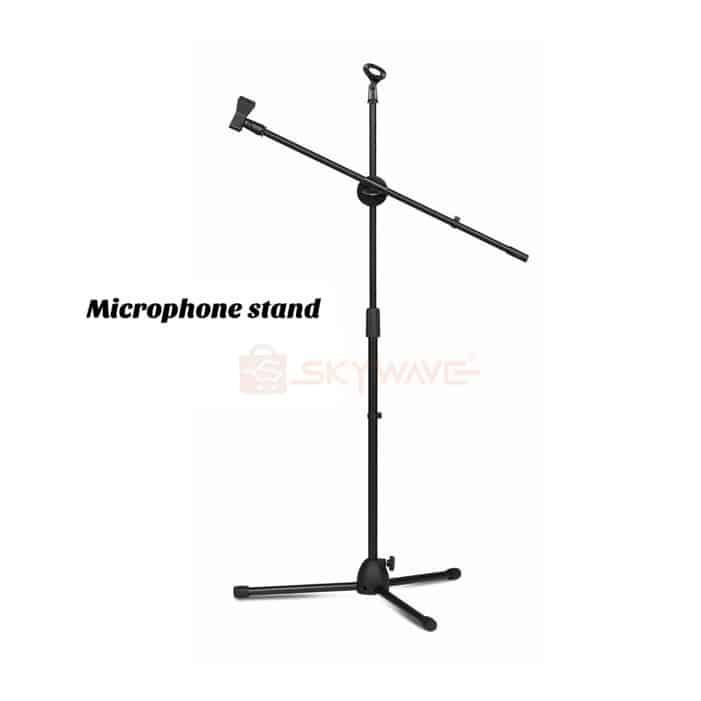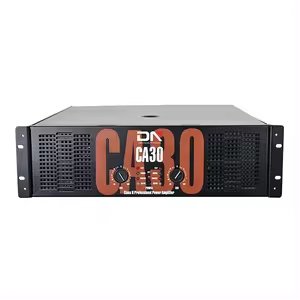Public Address System in Kenya

Introduction
A public address system is an essential tool for communication in various settings, including schools, churches, stadiums, and corporate events, among others. Before the public address system was introduced to the Kenyan market, people used to look for the loudest person in the room to speak on their behalf. Yeah, can you imagine wanting to say something but you can’t simply because you are not loud enough, stressful right? However, that narrative changed and we see more and more types of public address systems being ventured into the market. In Kenya, public address systems have become increasingly popular due to their numerous advantages and the need for effective communication in different public spaces. In this article we will discuss more about public address systems, why you will need one, the components of a public address system, and factors to consider when choosing one. Let’s get started!
Advantages of a Public Address System
Before we explain why you need a public address system, let’s first of all define what a PA system is. It’s also known as a PA system, which is a collection of audio equipment that amplifies and distributes sound to a large audience. It consists of various components that work together to produce clear and intelligible audio. Some of the benefits of investing in a PA system are:
1. Versatility and Flexibility
One of the advantages of having a public address system is its versatility and flexibility. The system can be easily adapted to different settings and requirements. Whether it is a small meeting room, a conference hall, an outdoor venue, or a large stadium, the system can be customized to meet the specific needs of the space. Additionally, the system can be integrated with other audio equipment, such as microphones, amplifiers, or audio mixers, to further enhance its functionality. This allows for seamless integration with existing audio systems or the ability to create a comprehensive audio solution tailored to the specific needs of the venue or event.
2. Reliable Communication System
As cities expand and more public spaces are created, there is a greater need for reliable communication systems to ensure that information reaches the intended audience. Public address systems provide a cost-effective solution to this problem.
3. Improved Worship Experience
Public address systems have also found extensive use in religious settings. Churches and mosques in Kenya often have large congregations, and it is crucial for religious leaders to communicate their messages. Public address systems allow these leaders to amplify their voices and reach every corner of the worship space, ensuring that their teachings and sermons are heard by all attendees. This has greatly enhanced the worship experience and facilitated effective communication between religious leaders and their followers.
4. Enhanced Entertainment Experience
In addition to its practical uses, a public address system also enhances the overall entertainment experience for the audience. Whether it is a concert, a sporting event, or a theatrical performance, the system ensures that the sound reaches every corner of the venue, allowing everyone to enjoy the event to the fullest.
5. Effective Information Dissemination
Public address systems are not only useful for emergencies but also for disseminating important information to a large group of people. In settings such as airports, train stations, shopping malls, or in educational institutions the system can be used to make announcements such as departures, arrivals, delays, exam times, product offers, important school days, or any other relevant information.
By providing clear and timely information, the system ensures that everyone is well-informed and can make informed decisions. This not only improves the overall experience of the individuals but also contributes to the smooth operation of the facility or venue.
Applications of Public Address Systems
Public address systems find applications in a wide range of settings, including:
- Concerts and Live Events: PA systems are commonly used in concerts and live events to amplify the sound of the performers and ensure that it reaches the entire audience. They are essential for providing a high-quality audio experience for both the performers and the audience.
- Public Gatherings and Speeches: PA systems are used in public gatherings and speeches to ensure that the speaker’s voice is heard clearly by everyone present. They are commonly used in political rallies, conferences, and public meetings.
- Sports Venues: PA systems are installed in sports venues to provide announcements, commentary, and music during games and events. They help create an engaging and immersive experience for the spectators.
- Worship Places: PA systems are used in churches, mosques, temples, and other places of worship to amplify the voice of the religious leaders and provide music during religious ceremonies.
- Education Institutions: PA systems are used in schools, colleges, and universities to make announcements, broadcast music, and facilitate communication between staff and students.
Factors to Consider Before Buying a Public Address System
There are so many options and types of public address systems in the Kenyan Market. Here are some of the factors to consider before choosing a Public Address System:
1. Sound Quality and Coverage
One of the primary considerations when selecting a public address system is the sound quality and coverage. The system should be capable of delivering clear and intelligible audio across the intended area. Factors such as speaker power, frequency response, and dispersion pattern should be evaluated to ensure even sound distribution and minimal distortion.
2. Scalability and Flexibility
The system’s scalability and flexibility are crucial, especially for organizations that anticipate future growth or changes in their communication needs. It is advisable to choose a system that can be easily expanded or integrated with other audio equipment, such as microphones or amplifiers. This allows for adaptability and customization to suit evolving requirements.
3. Ease of Use and Installation
When selecting a public address system, it is important to consider its ease of use and installation. The system should have a user-friendly interface and intuitive controls to simplify operation. Additionally, the installation process should be straightforward, ensuring minimal disruption and downtime during setup.
4. Reliability and Durability
Durability is a key factor, particularly for outdoor or harsh environments. The system should be built to withstand varying weather conditions and resist damage from dust, moisture, or accidental impact. Choosing a reliable and durable system ensures longevity and reduces the need for frequent repairs or replacements.
5. Cost and Budget
Lastly, the cost and budget considerations cannot be overlooked. It is important to strike a balance between quality and affordability. While it may be tempting to opt for the cheapest option, it is essential to invest in a system that meets the required standards and offers long-term value for money. In conclusion, when choosing a public address system in Kenya, factors such as sound quality, scalability, ease of use, reliability, and cost should be carefully evaluated. By considering these factors, organizations can select a system that meets their specific needs and ensures effective communication in various settings.
Components of a Public Address System and Their Importance
A public address system consists of various components that work together to deliver clear and reliable sound. Each component serves a specific purpose and contributes to the overall functionality of the system. Let’s explore the types of PA systems and their importance:
1. Microphones

Microphones are essential for capturing and converting sound into electrical signals. They allow speakers, presenters, or performers to amplify their voices or instruments, ensuring that their message or performance reaches the audience. There are different types of microphones available, including handheld microphones, and wireless microphones. The choice of microphone depends on the specific requirements of the event or venue
2. Microphone Stands

Microphone stands to provide stability and convenience for the speakers or performers. They allow for proper positioning of the microphone, ensuring optimal sound capture and reducing handling noise or interference. Adjustable stands accommodate speakers of different heights, enhancing their comfort during presentations or performances.
3. Amplifiers

Amplifiers are responsible for boosting the weak electrical signals from the microphones to a level suitable for driving the speakers. They ensure that the sound is clear, loud, and evenly distributed throughout the venue. The power rating and number of channels of the amplifier should be chosen based on the venue size and the number of speakers in the system.
4. Mixers

Mixers allow for the control and adjustment of audio signals from various sources, such as microphones, musical instruments, or playback devices. They enable the blending of multiple audio inputs and the adjustment of volume levels, equalization, and effects. A mixer is particularly useful in scenarios where multiple microphones or audio sources are involved, such as panel discussions or live performances.
5. Equalizers

Equalizers help fine-tune the frequency response of the audio signals, compensating for room acoustics or speaker characteristics. They allow for adjustments in bass, midrange, and treble frequencies, ensuring a balanced and natural sound reproduction. Equalizers play a crucial role in optimizing the audio quality and intelligibility of the public address system.
6. Speaker Stands

When it comes to setting up a public address system, the speaker stands to play a crucial role in ensuring optimal sound quality and coverage. These often overlooked accessories provide stability and elevation for speakers, therefore allowing them to deliver clear and powerful sound to the audience. They are sturdy, adjustable platforms designed to hold speakers at an optimal height and position.
6. Speakers

Speakers are the final link in the chain, converting the electrical signals into audible sounds. They are available in various sizes and configurations to suit different venues and requirements. The placement and number of speakers should be carefully considered to achieve even coverage and minimize dead zones or sound reflections. These speakers can be classified into two. Which includes:
Bass Speakers and Mid-Range Speakers
In larger venues or settings that require a more immersive audio experience, the inclusion of bass speakers and mid-range speakers can significantly enhance the overall sound quality. Bass speakers reproduce low-frequency sound, adding depth and richness to music or audio effects. Mid-range speakers ensure clear and balanced reproduction of vocals and instruments, contributing to the overall clarity and intelligibility of the system.
Conclusion
In conclusion, a public address system is a valuable asset in Kenya. Whether it is for educational institutions, public spaces, or entertainment venues. A public address system is a valuable tool that ensures clear communication. It also enhances safety and contributes to a positive and engaging experience for both organizers and audiences.

J need a complete wireless pA system, how much does it cost
Hi Dennis here is a link to a complete PA system but if you have specification we will include a link to all our PA system components to select the once you need thank you.
https://skywave.co.ke/complete-public-address-system/
https://skywave.co.ke/public-address-systems/